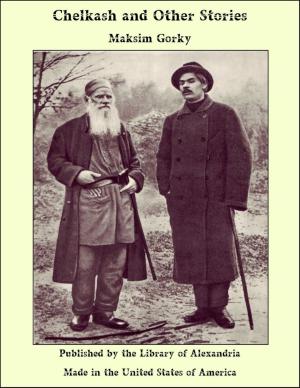The Boyhood of Great Inventors
Nonfiction, Religion & Spirituality, New Age, History, Fiction & Literature| Author: | A. Fraser Robertson | ISBN: | 9781465515001 |
| Publisher: | Library of Alexandria | Publication: | March 8, 2015 |
| Imprint: | Language: | English |
| Author: | A. Fraser Robertson |
| ISBN: | 9781465515001 |
| Publisher: | Library of Alexandria |
| Publication: | March 8, 2015 |
| Imprint: | |
| Language: | English |
JOHN SMEATON. People who have been on a long sea voyage, and have ended by sailing up the English Channel, tell us how their hearts beat high, after weary weeks and months at sea, when the cry went up while as yet land was a mere shadowy outline, “The Eddystone in sight!” For the gleaming lighthouse standing immovable in the midst of boiling waves and great mountains of blinding white spray spells “home” to the voyager. To us the “stone” round which the waters ceaselessly churn and “eddy” speaks of John Smeaton, the man who built it. The great engineer has been in his grave now for more than a century, but his most lasting monument stood for longer than that time firm as a rock. John Smeaton was born in 1724, near Leeds. Not the Leeds of to-day—a bustling, smoky centre of manufacture—but a quaint little town hemmed in by green country fields and lanes. It was in one of these that Austhorpe Lodge stood, the house of Smeaton’s father, a lawyer in Leeds. We shall yet come across many boyhoods tinged with shadow and struggle, and are not sorry to find this one happy, fondly tended, and bright with sunshine. There was no pinch in the lot of the Smeatons, no grinding poverty that we sometimes find to spur a boy to manhood before his time. Little John was cradled, as it were, in love. As a child his parents taught him at home. He was not eager to mix with Other boys in outdoor romp or play, and very early, while yet hardly more than a baby, he showed a strong love for pulling his toys to pieces to see what they were made of! Never was he happier than when he could get hold of a cutting-tool with which to shape toy pumps and houses and windmills. another amusement of his babyhood was to divide squares and circles
JOHN SMEATON. People who have been on a long sea voyage, and have ended by sailing up the English Channel, tell us how their hearts beat high, after weary weeks and months at sea, when the cry went up while as yet land was a mere shadowy outline, “The Eddystone in sight!” For the gleaming lighthouse standing immovable in the midst of boiling waves and great mountains of blinding white spray spells “home” to the voyager. To us the “stone” round which the waters ceaselessly churn and “eddy” speaks of John Smeaton, the man who built it. The great engineer has been in his grave now for more than a century, but his most lasting monument stood for longer than that time firm as a rock. John Smeaton was born in 1724, near Leeds. Not the Leeds of to-day—a bustling, smoky centre of manufacture—but a quaint little town hemmed in by green country fields and lanes. It was in one of these that Austhorpe Lodge stood, the house of Smeaton’s father, a lawyer in Leeds. We shall yet come across many boyhoods tinged with shadow and struggle, and are not sorry to find this one happy, fondly tended, and bright with sunshine. There was no pinch in the lot of the Smeatons, no grinding poverty that we sometimes find to spur a boy to manhood before his time. Little John was cradled, as it were, in love. As a child his parents taught him at home. He was not eager to mix with Other boys in outdoor romp or play, and very early, while yet hardly more than a baby, he showed a strong love for pulling his toys to pieces to see what they were made of! Never was he happier than when he could get hold of a cutting-tool with which to shape toy pumps and houses and windmills. another amusement of his babyhood was to divide squares and circles















